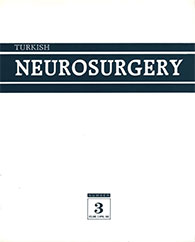2Departments of Physiology, University of South Alabama, Mobile, United States of America
3 Departments of Anatomy and Cell Biology University of South Alabama, Mobile, United States of America The distal internal carotid artery (DICA), middle cerebral artery (MCA) and Azygous anterior cerebral artery (AzACA) were isolated via the transorbital approach in anaesthetized rabbits. Cerebral blood flow (CBF) was measured using radiolabelled microspheres before, during and 15 minutes after one hour's unilateral occlusion of DICA, MCA and AzACA. At 50 minutes of ischaemia, animals received either a placebo (control) or one of our drugs; superoxide dismutase (SOD) (25 mg/kg), catalase (10 mg/kg), methimazole (MMI) (5 mg/kg) or indomethadn (10 mg/kg). A sixth group was maintained on a tungsten-supplement diet for 14 days prior to the induction of ischaemia. A seventh group was sham operated.
Microvascular integrity within the brain was assessed by leakage of albumin-dye complex (ADC) across the blood-endothelial barrier (BEB), as quantified by microspectrofluorometry. In brain regions with substantial ADC leakage. CBF was reduced by 65% during ischaemia as compared with a 23% reduction in brain regions maintaining normal vascular integrity. CBF values returned to or exceeded baseline levels during reperfusion.
In the control group. ADC leakage across the BEB was increased 50% within the occluded hemisphere (OH), and extensive ADC extravasation into the interstitial space was seen. All treatment groups (SOD, catalase, indomethadn, MMI, and tungsten diet) afforded protection of cerebral endothelium during reperfusion as evidenced by minimal ADC leakage into the interstitial space.
The present study shows that the increased leakage of ADC into the brain parenchyma associated with ischemia/reperfusion (I/R) is increased by O2 radical formation, produced by arachidonic add (AA) catabolism and by the conversion of hypoxanthine to xanthine by xanthine oxidase (XO). In addition, it appears that neutrophils are also involved in the process since MMI protected the endothelial damage associated with I/R.
Keywords : Cerebral Ischaemia, SOD, MMI, Tungsten, Catalase, Indomethadn, Free Radicals




